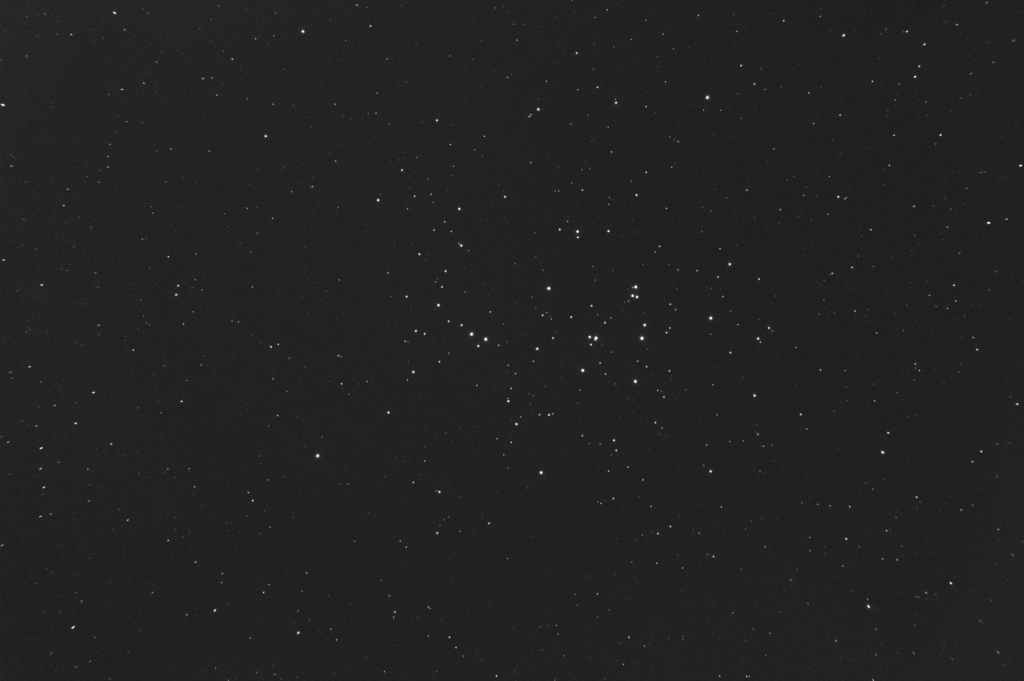I have been testing a new optical configuration to give the PTO the ability to record larger FOV images. Mounting my Nikon D90 to a 80mm f/6 apochromatic telescope gives a 2.9°x 1.9° FOV image. The resulting 5.26 sq° image is 97% larger than the standard science image used for asteroid/comet analysis. The size of the camera chip is large enough though that significant distortion is visible at the extreme corners of the image. As you can see the stars are ‘stretched out’ with each pointing towards the center of the image. This is known as pincushion distortion. A field flattener will need to be added to correct this problem.
The test target is a fairly large open cluster. It lies in the center of the constellation Cancer and is known as the Beehive cluster. The current population count is about 1,000 stars although only the brightest form the naked eye object. This is one of the first objects observed by Galileo when he first turned a telescope to the sky. He counted 40 stars.
The compressed display makes the image background much brighter than it should be. Click on the image for a larger more accurate view. This will also make the corner distortion easier to see.
